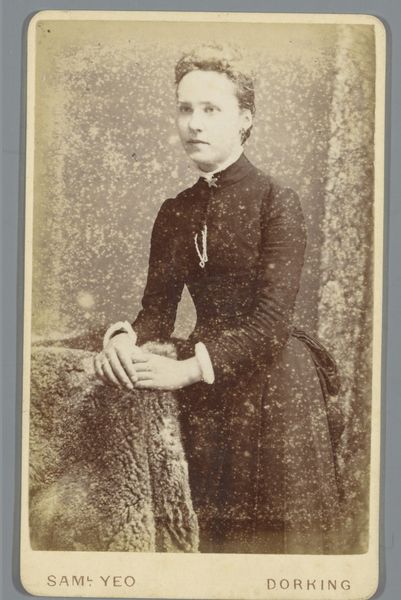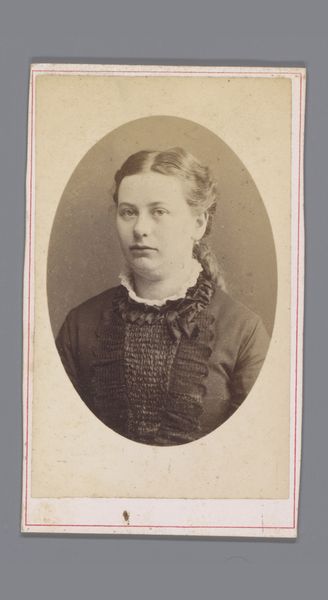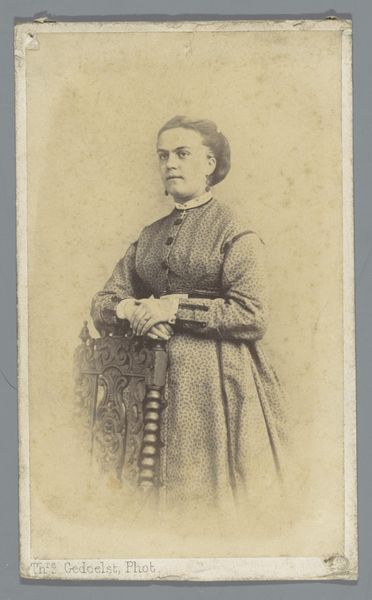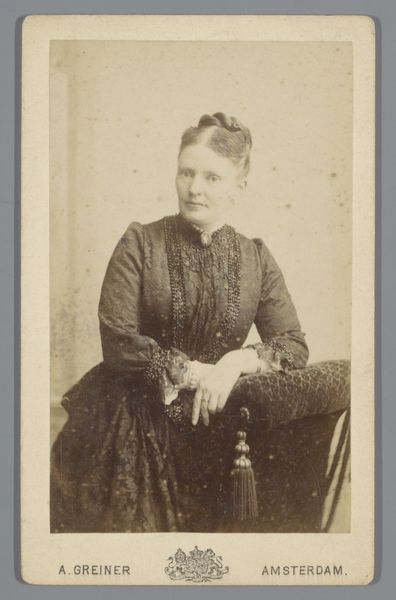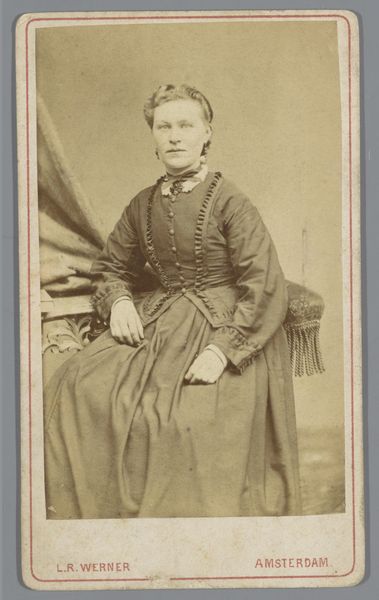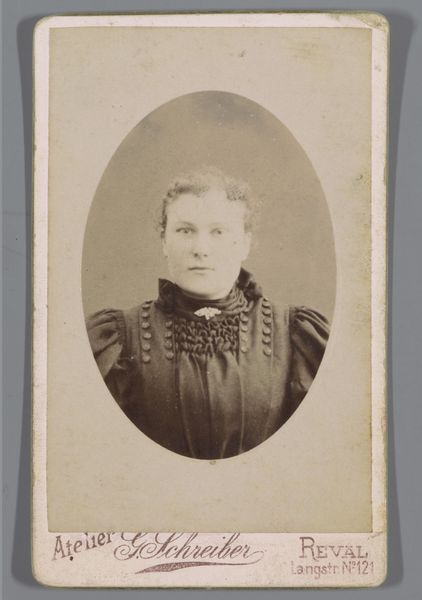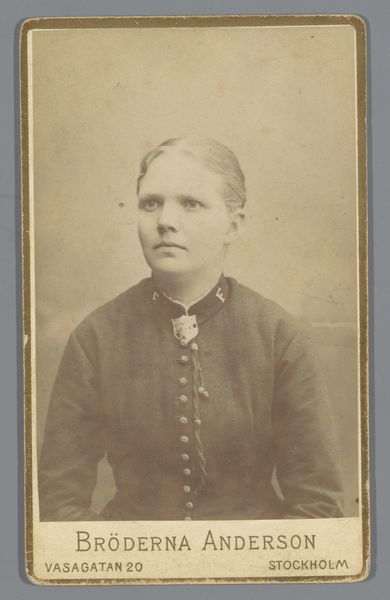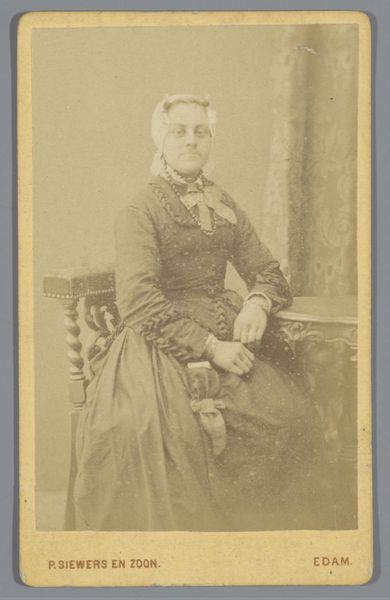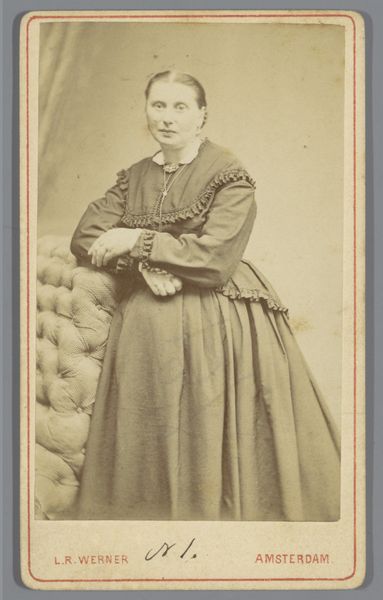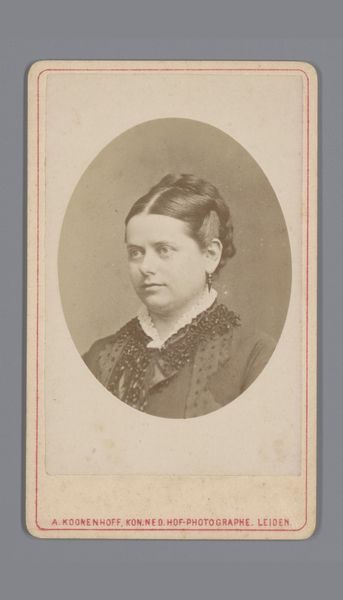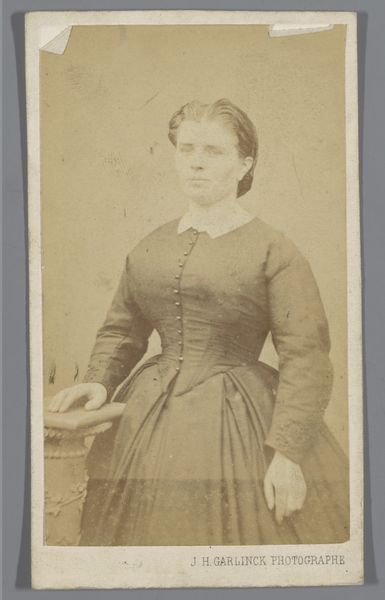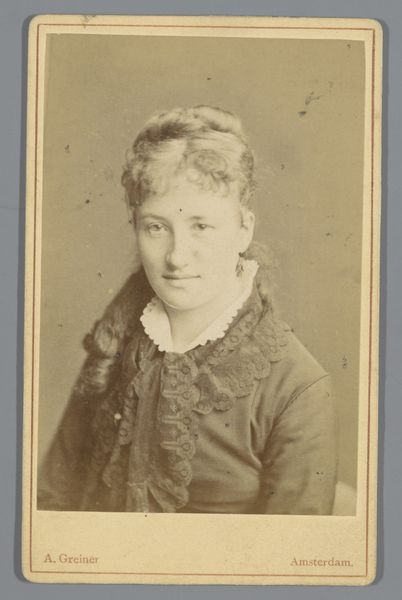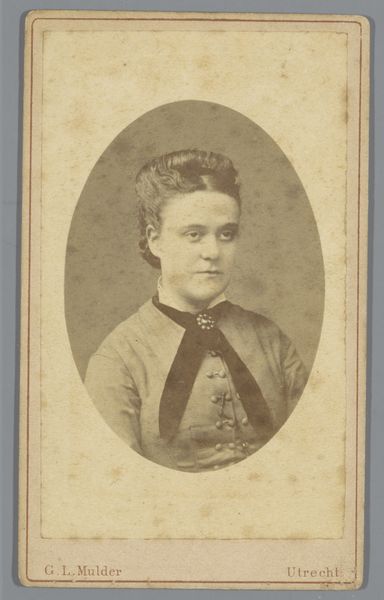
#
aged paper
#
toned paper
#
vintage
#
photo restoration
#
unrealistic statue
#
old-timey
#
framed image
#
19th century
#
paper medium
#
statue
Dimensions: height 100 mm, width 62 mm
Copyright: Rijks Museum: Open Domain
Editor: This is "Portret van een onbekende zittende vrouw," by Willem Carel Heijenberg, dating from 1872 to 1882. It’s a striking photographic print on paper. There's a formality and gravity to it that’s characteristic of portraiture of the time. How might you interpret this photograph? Curator: Focusing on the material aspects, it's crucial to recognize that in the late 19th century, photography was rapidly evolving as both an artistic medium and a commodity. The production of such portraits democratized representation. Note the type of paper used, the toning process-- how do those material choices shape the overall aesthetic and communicate social standing? This wasn't simply about capturing an image. What does the sitter's clothing convey in the context of Victorian manufacturing? Editor: So, beyond just a pretty picture, you’re seeing the photo as a product of the time period’s industry? How does it challenge art and craft, then? Curator: Precisely! It challenges conventional notions of high art by highlighting the industrial processes involved. Look at the clothing she wears; it implies factory production in a growing global marketplace. This bridges the gap between artistic portraiture and the larger industrial, consumerist structures. It makes us confront mass production rather than artistic handiwork. What does mass production of that fabric signal? Editor: Hmm, I hadn’t thought of it that way before. It does point to the increased availability of goods and a developing consumer culture. And you see that embedded in this formal portrait! Curator: Yes, these early photographs present us with insights into the commodification of images and fashion. We see the labor involved in making both the photograph and what the sitter is wearing. That material relationship, right down to the specific chemicals used to develop the image, is core to understanding this piece. What assumptions can we begin to unravel by exploring this? Editor: This gives me a lot to think about. I definitely see the portrait as part of the economic and social fabric of the late 19th century now, beyond its aesthetic qualities.
Comments
No comments
Be the first to comment and join the conversation on the ultimate creative platform.
